Global Smart Energy Federation (GSEF)
Newsletter December 2023
COVER STORY
GLOBAL SMART ENERGY FEDERATION AND INDIA SMART GRID FORUM @ ENLIT EUROPE 2023, PARIS, FRANCE
.jpg)
.jpg)
GSEF and ISGF participated at Enlit Europe (formerly known as European Utility Week) held on 28-30 November 2023 in Paris, France. This is one of the largests event in Europe for the utility sector, participation of 10,000+ international smart energy stakeholders and 500+ exhibitors. The event offers notable multi-track strategic conference programme, 3-day utility case study programme and a highly revered innovation hub.
Mr. Reji Kumar Pillai, President, ISGF, Mr. B.N. Sharma, Chairman, Rajasthan Electricity Regulatory Commission, 3) Mr. Anil Rawal, MD & CEO, IntelliSmart Infrastructure Pvt Ltd (IntelliSmart), Mr Samuel Paul N (IAS) Managing Director, Kanpur Electricity Supply Company, Mr. Ajoy Rajani, Executive Vice Chairman (India) & President (US) at CyanConnode, and Ms. Reena Suri, Executive Director, ISGF participated from India.
Think Smartgrids, France organized a workshop on the evening of 27th November 2023 followed by cocktails which was attended by 150 + experts from around the globe.
Ms. Valérie Anne Lencznar, GSEF Ambassador–Europe & Francophone Africa Regions also participated in ENLIT conference, she found that new entrants were looking to offer more services to "decomoditize" the energy supply, which was a narrative brought by Octopus Energy during the sessions. Many innovative start-ups were present, acting on the borders of the energy market and the customers (either residential or industrial) e.g Fractal Energy.
GLOBAL STORIES ON SMART GRID
EU Launches €4 Billion in Funding for Clean Energy Projects Including Energy Storage
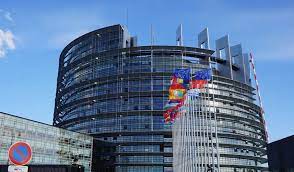
The EU has launched a grant funding opportunity worth €4 billion (USD 4.4 billion) for upstream and downstream clean energy projects, including energy storage. The grant funding will come from the EU’s Innovation Fund, which is funded by revenues from the bloc’s Emissions Trading System (ETS), a scheme which aims to make polluters pay for their greenhouse gas emissions. The new funding opportunity is split into five categories. The bulk, accounting for €2.4 billion, will be allocated to general decarbonization projects, and €1.4 billion will be allocated to cleantech manufacturing projects focused on manufacturing components for renewable energy, energy storage, heat pumps and hydrogen production. Another €200 million will go to pilot’ projects with a capex over €2.5 million focusing on deep decarbonization.
Read More: https://bitly.ws/34Dp9
ACWA Power Signs Deal to Develop the Largest Green Hydrogen Project in Indonesia
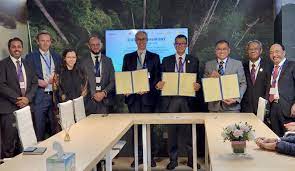
ACWA Power, the world’s largest private water desalination company, leader in energy transition and first mover into green hydrogen, is set to develop in the largest green hydrogen facility in Indonesia with PT Perusahaan Listrik Negara (PLN). The Garuda Hidrogen Hijau (GH2) Project, which is expected to start commercial operations in 2026, will run on 600 MW of solar and wind power, and will produce 150,000 tonnes of green ammonia per year. The cost of the project is estimated to be upwards of $1 billion. The bidding process for engineering procurement and construction (EPC) for the Garuda Hidrogen Hijau project is expected to start in the first quarter of 2024, with financial close planned for the end of 2025.
Read More: https://bitly.ws/34DqX
Himachal Pradesh Launches e-Taxi Scheme for Green Mobility and Employment Opportunities

Himachal Pradesh government has launched the e-Taxi scheme with the objective of transforming the state into an environmentally conscious region. The e-Taxi scheme, introduced aims to issue electric taxi permits to the unemployed with a 50% subsidy. These taxis will be available for services in government departments, promoting employment and contributing to a pollution-free environment in Himachal Pradesh. Furthermore, the government is set to install e-charging stations at 17 locations across the state.
Read More: https://bitly.ws/34DyM
Toyota and SDG&E Collaborate on Vehicle to Grid (V2G) Research for Battery Electric Vehicles
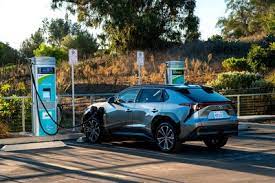
Toyota Motor, North America, U.S.A and San Diego Gas & Electric (SDG&E) Company have partnered on vehicle-to-grid research for battery electric vehicles with a Toyota bZ4X. The research will be conducted at SDG&E's campus in San Diego, California, using Fermata Energy's bidirectional charger and V2G platform. It will study bidirectional power flow technology to help BEV owners charge their vehicle's batteries from the electric grid and discharge electricity from the batteries back to the grid. SDG&E and Toyota will identify current and future customer benefits to be achieved through new products and services. The pilot will assist SDG&E in understanding the infrastructure required for EV charging, both in public and private settings, and to stabilize the power grid during peak hours.
Read More: https://bitly.ws/34CP4
Electreon Unveils the World's First Commercial Wireless Charging Terminal for Buses in Israel
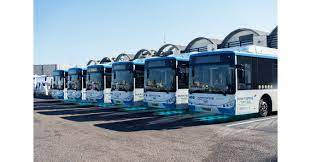
Electreon has successfully completed the construction of a ground breaking wireless charging terminal for parked urban electric buses, marking a world first in the field of this innovative charging technology. The commercial project, delivered to Electra Afikim, located in Rosh HaAyin in the center, and supplies stationary wireless charging to the e-buses during the night and day, in parking bays at the public bus terminal in a distributed energy model. The project, valued approximately 5.8 million ILS (approximately 1.6 million USD) for 2023, includes payments for software services, operations, and maintenance over the project's duration. Electra Afikim, is one of Israel's major public transportation operator, manages around 500 bus service lines across the country, covering 40 million miles annually and transporting 51 million passengers.
Read More: https://bitly.ws/34CY6
Ford Pro and Xcel Energy Collaborate to Support Installation of 30,000 EV Charging Ports for Business Fleets by 2030
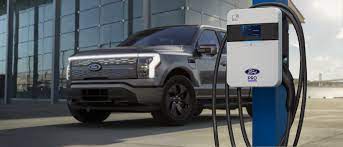
Ford Pro and Xcel Energy have announced a unique collaboration to support the deployment of 30,000 electric vehicle (EV) charging ports in Xcel Energy service territories across the U.S. by 2030. This initiative will increase access to charging infrastructure for business fleets across Xcel Energy’s service areas in the U.S. Through the program, most upfront costs for EV charging equipment and installation for businesses will be offset by Xcel Energy. Ford Pro will offer its suite of end-to-end charging solutions to Xcel Energy business customers as part of the effort. Starting in 2024, 30×30 will be available through Xcel Energy’s EVSI program in Colorado and Wisconsin.
Read More: https://bitly.ws/34D6n
Schneider Electric Calls for Rapid Deployment of Smart Grids to Accelerate Energy Transition

Schneider Electric, the leader in the digital transformation of energy management and automation, today called on energy decision makers to prioritize digital upgrades to realize the potential of sustainable, resilient, efficient and flexible Grids of the Future. Schneider Electric calls for rapid deployment of smart grids to accelerate energy transition (Photo: Business Wire). The urgent call comes as world leaders gather at COP28 in Dubai to accelerate climate action while at the same time, key players in the electric power industry meet at Enlit Europe 2023 in Paris, France, to discuss transformative solutions for Europe's electricity systems.
Read More: https://bit.ly/3Nb8Uco
The Rise of Global Smart Grid Technology
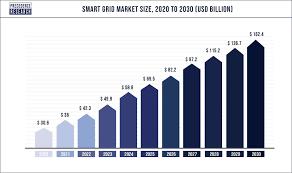
The world has witnessed a significant shift towards sustainable and efficient energy management. As the demand for electricity continues to rise, traditional power grids are struggling to keep up with the increasing needs of modern society. However, a new solution has emerged on the horizon the global smart grid technology.
Read More : https://bit.ly/3RcTB4g
Blockchain's Role in Pioneering a Sustainable Business Landscape
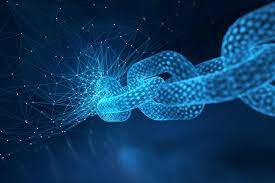
The call to unite efforts for a sustainable future resonates beyond geographical borders, professional divisions and individual pursuits—emphasizing the universal need for collaboration and innovation in addressing the pressing environmental challenges that the world is facing today.
Recognizing this, an increasing number of industry leaders from various domains and spheres are stepping forward, devising strategies and rolling out solutions to protect and preserve our collective home.
Read More: https://www.forbes.com/sites/forbestechcouncil/2023/10/27/blockchains-role-in-pioneering-a-sustainable-business-landscape/?sh=1c13c041a4d8
MEMBER UPDATES
EPRI AND RTE HOST EUROPEAN ENERGY INNOVATION INTEREST GROUP MEETING FOLLOWING ENLIT EUROPE
The European Energy Innovation Interest Group (EIIG) was created to support sharing of innovation strategies, practices, challenges and success stories across the European Energy Sector. Organizations that help support the interest group includes EPRI, Eurelectric, ENTSO-e, E.DSO, The EU DSO Entity, InnoEnergy, the European Space Agency, Innovate UK and DENA. The interest group addresses topics related to innovation strategy across Europe, including:
-
ENGAGING THE STARTUP COMMUNITY
-
CREATING AND MANAGING DEMONSTRATION PROJECTS
-
COMMERCIALIZATION - MOVING FROM DEMONSTRATIONS TO DEPLOYMENT AND INTEGRATION
-
ORGANIZATIONAL STRUCTURE, CHANGE MANAGEMENT OR EXECUTIVE ENGAGEMENT
-
NEW BUSINESS MODELS AND REGULATORY STRUCTURES
-
INTERNAL INNOVATION PRACTICES
EPRI provides coordination for the group in conjunction with a broader Global Innovation Effectiveness (GIE) Network, providing value to an even broader group of utilities.
Folllowing the ENLIT conference in Paris, RTE (the French transmission system operator) hosted a group of about 25 innovation experts from around Europe at their headquarters in La Defense, Paris on , 01 December, 2023 Few highlights from the meeting are as follows:
-
Jerry Ligrani from EPRI provided an overview of the Global Innovation Effectiveness (GIE) Network, the IncubatEnergy Labs Challenge and the IncubatEnergy Network. These functions are operated as a collaboration of electric utilities around the world to help accelerate innovation in the Energy sector and provide direct exposure to new technologies and innovation practices in a collaborative manner. The Global Innovation Effectiveness Assessment has been performed with over 40 utilities around the world and we continue to develop better information on best practices to accelerate innovation for the energy transition.
-
Tom Poole updated the group on Innovate UK activities. Innovate UK helps apply 450 million Pounds from OFGEM (UK regulator) for innovation in the electricity and gas networks. They just held their Energy Innovation Summit at the end of October, 2023 where they reviewed innovation projects and shared lessons learned to help move technologies towards broader deployment. The particular interest to this group is a report that Innovate UK Commissioned characterizing the Culture of Innovation that included development of an Energy Innovation Exemplar (see diagram below and check out the report from the PA Consulting web site - https://www.paconsulting.com/industries/energy-and-utilities/innovation-culture-there-is-no-stopping-you

Innovation Culture Exemplar developed by PA Consulting and Innovate UK
-
Florent Xavier at RTE and described the three main themes being addressed by the R&D Division at RTE:
-
Operations (operational system management and stability – e.g. application of power electronics to improve system performance with increasing penetration of renewables)
-
Infrastructure (asset management and new infrastructure like HVDC)
-
Important questions that need to be addressed in terms of impacts on the power system requirements (e.g. environment/climate impacts, societal challenges)
-
RTE is a strong proponent of open source software and was one of the founding utilities behind LF Energy for support of open source projects in the power systems sector. Along with this emphasis, RTE helped create a new research collaboration called the Collaborative Research for Energy System Modeling – CRESYM – with a focus to develop open source energy system modeling tools for next generation energy systems.
The round table discussion allowed all attendees to provide input on their innovation challenges, current priorities and success stories. This was followed by breakout sessions that focused on challenges in going from demonstrations of new technologies to broader deployment.
EPRI is looking forward to expand the interest group. Incase interested in participating, drop a note to Ms. Anne-Lise Laurain at allaurain@epri.com and join the next meeting that will be part of the EPRI European Workshop Week on 16 April 2024 in Lisbon.
Article Contributed by Ms. Anne-Lise Laurain, Senior Technical Leader and Mr. Mark McGranaghan, Fellow, EPRI
APUA YEARLY ACTIVITY PROGRAM


In the framework of the implementation of APUA yearly activity program, APUA General Secretariat in collaboration with CONLOG PTY, an APUA affiliate member organized a meeting of the scientific committee of APUA from 5th to 8th December, 2023. The meeting took place at the headquarters of CONLOG PTY in Durban, South Africa
The Third meeting of the Scientific Committee for the 2022-2025 mandate aimed to:
-
Discuss the program for carrying out specific studies for the mandate under the control of the Scientific Committee
-
Take stock of the progress made by each study committee with regard to the ongoing activities of the study committees and the preparation of the 21st ASEA Congress.
Nearly a hundred participants, including 80 experts from utilities in Benin, Togo, Ghana, Niger, Senegal, Mozambique, Morocco, Mali, Cote d'Ivoire, Angola, South Africa, Guinea Conakry, Burkina Faso, France, Egypt and Burundi participated in this meeting.
A positive trend in the advancement of study committees work was noticed with a genuine display of interest from multicultural and multilingual expert groups Their keen involvement indicated a growing commitment to participate actively in APUA activities, aiming to enhance South-South cooperation in the power sector in Africa.
Article contributed by Abel Dider Tella, Director-General, Association of Power Utilities of Africa (APUA)
GSEF SMART GRID EDITORIAL
Rethinking Standards Development For the Grid-Edge

I have participated in international/national standards committees related to power systems. I still do in smart grid and energy related areas. While it works well for the most part, the standard-setting process is slow in relation to grid-edge innovations. We need to rethink this to avoid playing continuous catchup, else the consumers will have products that utilities find not grid-code compliant or safe.
The electric power industry draws its strength from its legacy over the past century. Its business models and regulatory construct all evolve from this legacy. Its hallmark is its standards, collectively contributed by thousands of global experts. International Standards Development Organizations (SDO) such as ISO, IEC, CEN, CENELEC, IEEE, and national SDOs such as BS, IS, ANSI, facilitate this massive effort. Below these national standards are several application codes prescribed by Trades/Safety Authorities/Councils (electrical, plumbing), Municipalities (fire safety), Building Councils (building codes), etc. These codes apply within specific state or district to meet local requirements and often override parts of the national/international standards.
The fast-developing grid-edge (EVs, inverters, energy storage, PV) is causing standards to play catchup to the technology. Often products get sold while standards are absent or evolving, leading to safety issues or substandard features. The typical SDO process begins with identify collective needs (system, equipment, other). International SDO efforts call for national “mirror” committees. It takes several years before a standard is adopted (due to iterative reviews and balloting). Many national, regional, and local nuances create a “healthy tension” amongst stakeholders, especially as it relates to operating conditions, affordability and/or technological prowess.
The SDO process in power systems has delivered well over the past 60 years (1950s to early 2000s). This was due to the efforts of (then) vertically integrated utilities, multinationals, OEMs and large R&D labs, in the USA, UK, France, Germany, Sweden, Japan & Italy. Substantial investments in people, time and testing were made by these organizations (technical papers, meetings, conferences, R&D and field trials).
Distributed, discretized, asynchronous and digital energy systems since the early 2000s (wind, PV, fuel cells, EVs, energy storage, smart-inverters, distributed controls, etc.) pose a challenge to yesterday’s SDO processes. The painful transition to a Smart Grid and now to Smart Energy is causing industry fatigue in standards-setting. Several factors contribute to this fatigue, (a) smaller deregulated utilities with limited focus and resources; (b) fragmented OEMs along sub-technology lines; (c) growing SMEs/Startups and small third-party system builders who have little resources; (d) decline of large government labs; and (e) rapid pace of technology development. The grid-edge technologies fall into this category.
Since the early 2000s, all SDO efforts has been challenging due to lack of government funding (hosting, travel) and participation cutbacks from utilities, OEMs, SMEs, and industrial users. It is discouraging to see committee participation limited to retirees, academia and SDO staff. Very few OEMs partake in such meetings. Currently, the standards-setting pace is not commensurate with the rapid development in grid-edge technologies. One can see this in areas like hybrid inverters, battery energy storage and rooftop PV where the standards are lagging the market or have been augmented a few times over the last 10 years, resulting in a short shelf-life.
Standards for grid-edge products and systems need to evolve much quicker keeping pace with (or even leading) technology development. In addition, the SDO process needs to attract passionate participation from the very stakeholders that stand to benefit from its adoption. My initial thoughts are indicated below and are by no means substantive (at best inputs for a healthy discussion):
1. Be Bold to Anchor Standards in the Future: This is required in a fast development area. The IT, chipset and automation industries often take this approach both from an architecture and a requirements perspective. This approach has served it well. The power sector too has done this (albeit limited). In a recent LVDC (low voltage DC) example (where I was involved), the SDO process pegged the voltage at 48V even when existing systems were at 12V and 24V. In a short span of a few years, most battery systems are offered at 48V for stationary applications.
2. Standardize Key Global Ambient Conditions: This area is fraught with misinterpretations in applying de-rating, operating and general safety factors. Mapping key regional or national ambient conditions (temperature, humidity, rain, floods, windspeed, snow/ice) will help operational appropriateness of equipment in such regions. Standardized derating factors will help in this environmental mapping. For example, PV panels are rated at 20 °C (little relevance to Asia, Middle East, and Africa). This also applies to battery energy storage systems for their effective cooling and fire prevention. A standardized baseline will provide clarity to the OEMs, will help developing countries and likely eliminate multiple certifications.
3. Recognize Plug-and-Play in Grid-Edge: Akin to IT and automation standards, embed plug-and-play concepts in grid-edge standards development. Distributed, discretized, asynchronous and digital energy standards will require more emphasis on “black-box” system performance, standardized interfaces and testing rather than traditional equipment specifications. For example, performance requirements for hybrid inverters to maintain behind-the-meter power factor at > 0.9 and ± 10% nominal voltage at the PCC (point-of-common-coupling), eliminates VAR and voltage management for utilities. Also, interfaces should support adopted protocols (DNP3, Modbus, 61850). The industry must ensure its support for the grid code.
4. Ensure Limits Through Direct Thermal Measurements: Often electrical parameters (Amps, KW, KVA) are used as temperature proxies due to the intrusiveness of RTDs and thermocouples. However, today, optical fiber temperature sensing systems has now become mainstay providing thousands of time-stamped, real-time, digital temperature measurements. This allows for dynamic operating thermal limits (pre thermal status with temperature rise due to projected load/ambient). With high penetration of renewables, ESS and climate change swings, this dynamic limit is warranted.
5. Embed Self-Checking Features: Often protection systems only cover major incidents such as short-circuits and/or fires, but not real-time operating conditions (transient overloads) that could lead to cumulative degradation. Most grid-edge systems are unattended and it is important that transient overloads, thermal limits, etc. are also included in self-checking features. For example, battery energy storage thermal runaways are often caused by internal cell overheating due to overload rather than a major mechanical incident. Such real-time self-checking features must automatically regulate output or shutdown rather than merely alarm.
6. Prescribe Dynamic Performance: Often standards prescribe static operating limits, but rarely prescribe dynamic performance within such limits. These are left to the OEM’s own simulations and testing. This leads to performance issues later after the grid-edge equipment is connected. For example, a hybrid inverter’s dynamic response to varying supply and load fluctuations must be specified in the standards as a performance requirement. A second example would be that a load ramp must trigger commensurate increase in cooling to prevent overheating, else it should be prevented from meeting such load ramps.
The above are a few of my thoughts to elucidate discussion and whether their adoption into standards-setting processes, will speed up things and also ensure the standard’s useful shelf life (relative to the technology pace). Smart energy will warrant customer choices and the SDOs need to be ready for this.
The sooner we rethink this fundamentally, the better would be our future as a viable power industry.
Upcoming Smart Grid Events
DistribuTECH 2024 Orlando, USA
DistribuTECH 2024
Orlando, USA
27th -29th February 2024
https://www.distributech.com/
India Smart Utility Week (ISUW) 2024 Delhi, India
India Smart Utility Week (ISUW) 2024
Delhi, India
12th-16th March 2024
http://www.isuw.in/
Middle East Energy Dubai World Trade Centre, UAE
Middle East Energy
Dubai World Trade Centre, UAE
16-18th April 2024
https://www.middleeast-energy.com/en/home.html
Enlit Africa 2024
Enlit Africa 2024
Cape Town International Convention Centre,
Cape Town, South Africa
28-30 April 2024
https://www.enlit.world/events/enlit-africa-2023/
26th World Energy Congress
26th World Energy Congress
Rotterdam Ahoy, Rotterdam, the Netherlands
22-25 April 2024
https://www.worldenergy.org/
GSEF Transition Energy Summit (GETS) 2024 Turkey, Istanbul
GSEF Transition Energy Summit (GETS) 2024
Turkey, Istanbul
21st -22nd May 2024
www.gsef-ets.org
World Utilities Congress, Abu Dhabi, UAE
World Utilities Congress,
Abu Dhabi, UAE
9-11th September 2024
www.worldutilitiescongress.com
Renewable Energy Grid Integration Week 2024 Helsinki, Finland
Renewable Energy Grid Integration Week 2024
Helsinki, Finland
7-10th October, 2024
https://integrationworkshops.org/events/
E-Newsletter December 2023
Content
- GLOBAL SMART ENERGY FEDERATION AND INDIA SMART GRID FORUM @ ENLIT EUROPE 2023, PARIS, FRANCE
- EU Launches €4 Billion in Funding for Clean Energy Projects Including Energy Storage
- ACWA Power Signs Deal to Develop the Largest Green Hydrogen Project in Indonesia
- Himachal Pradesh Launches e-Taxi Scheme for Green Mobility and Employment Opportunities
- Toyota and SDG&E Collaborate on Vehicle to Grid (V2G) Research for Battery Electric Vehicles
- Electreon Unveils the World's First Commercial Wireless Charging Terminal for Buses in Israel
- Ford Pro and Xcel Energy Collaborate to Support Installation of 30,000 EV Charging Ports for Business Fleets by 2030
- Schneider Electric Calls for Rapid Deployment of Smart Grids to Accelerate Energy Transition
- The Rise of Global Smart Grid Technology
- Global Smart Grid Market Size, Forecast, Analysis & Share Surpass US$ 185.6 Billion By 2032, At 6.75% CAGR
- Blockchain's Role in Pioneering a Sustainable Business Landscape
- EPRI AND RTE HOST EUROPEAN ENERGY INNOVATION INTEREST GROUP MEETING FOLLOWING ENLIT EUROPE
- APUA YEARLY ACTIVITY PROGRAM
- Rethinking Standards Development For the Grid-Edge
- DistribuTECH 2024 Orlando, USA
- India Smart Utility Week (ISUW) 2024 Delhi, India
- Middle East Energy Dubai World Trade Centre, UAE
- Enlit Africa 2024
- 26th World Energy Congress
- GSEF Transition Energy Summit (GETS) 2024 Turkey, Istanbul
- CIGRE SESSION 2024 PARIS
- World Utilities Congress, Abu Dhabi, UAE
- Renewable Energy Grid Integration Week 2024 Helsinki, Finland






